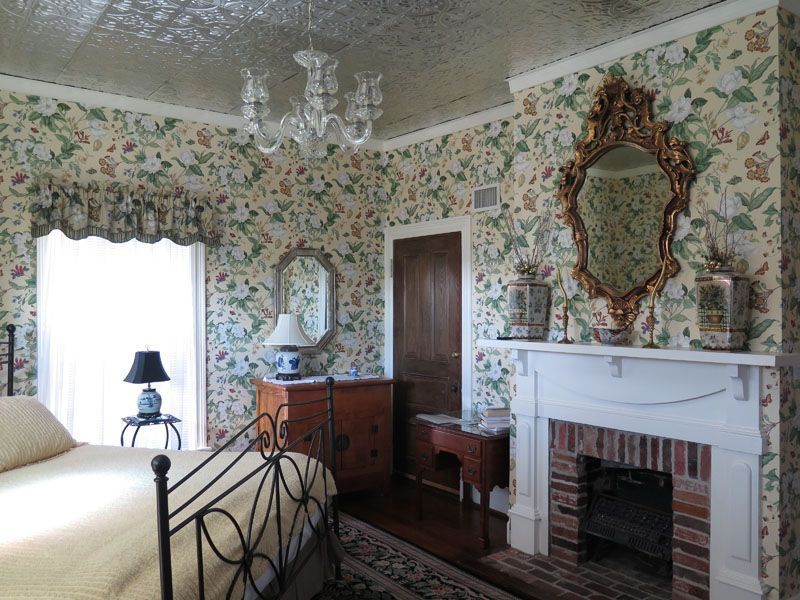About the Historic Hanna House
History of the Hanna House
Built in 1896 by Rudolph Ulrich
In 1710 an expedition, funded by the English on behalf of Baron DeGraffenreid of Switzerland landed just north of the confluence of the Trent and Neuse rivers. A colony was established by the Swiss, but was rapidly taken over by the English. In 1747, New Bern, as the Swiss had named her, became the capitol of the Carolina colonies (including North and South Carolina). Governor Tryon, appointed by his majesty, the king of England, ran the colony from 1765 until 1773. While here, he had the Tryon Palace constructed. It was the most imposing structure in the town. Following the revolution, the capitol of North Carolina was moved from New Bern, eventually winding up in Raleigh.
By the end of the 18th century, the Tryon Palace was destroyed by fire, only the stables and cookhouse escaping the flames. New Bern remained a thriving town, doing much business in turpentine and lumber. Because of its ease of access both to the Atlantic and further inland its deep, safe harbor was always bustling. At the beginning of the Civil War, New Bern was seen as a strategic location by the Union. In 1862, The Battle of New Bern was waged (the battlefield lies about three miles south of the center of town). The Union took possession of the town, using our immediate neighbor’s home as a command post. Of note, was the fact that prior to the Civil War New Bern had more ‘free blacks’ than any other state in the union. Blacks in New Bern were important property owners and business people. It wasn’t until the imposition of the ‘Jim Crow’ laws in the 1870’s that discrimination and segregation took the form most of us are familiar with.
The Hanna House was built in 1896 by Rudolph Ulrich.
He was a successful grocer in town, able to expend the almost $3,000 dollars required to build his home. Although significant, his success permitted him to sell the property within 6 years and move further inland. The Hanna House is one of over 150 pre-1900 homes still standing today. Most have been painstakingly refurbished and returned to their former grandeur. The Inn was used as an apartment house during the early 1900’s, housing Civil Defense workers during World War I. A Civil Defense helmet was found under the former back staircase during renovations.

By the mid 1900’s New Bern became an out-of-the-way destination and fell on hard economic times. The State, however, was convinced, because of its history, that it could once again become a city worthy of public attention. To that end the State underwrote the reconstruction of the Tryon Palace. Using original architectural drawings, the palace was rebuilt. Landscaping plans were found in Venezuela and returned here for implementation. Construction was finished in 1959. Today, The Palace sites and gardens boasts more than 12 historic properties and a new, state of the art history center. You’re not big on history? How about golf? How about our rivers and access to the ocean? You enjoy fine food? Well, at the Hanna House you will have the best breakfast imaginable. Want more, we can arrange for that, plus direct you to fine dining in town. The beauty of New Bern is anchored in its location, its living history and modern attractions.
Camille Klotz
Camille, a Brooklyn native, grew up with a deep appreciation for the art of cooking and savoring delicious cuisine. Despite her detour to Michigan, where she worked as a Dental Hygienist and raised two sons, her burning passion for food never waned. Returning to school to pursue her culinary dreams, she completed programs and now brings her expertise to Hanna House Bed and Breakfast, a charming and historic retreat nestled in the heart of Newbern, North Carolina.
Meet Your Innkeepers

Joe Klotz
Camille was raised in Brooklyn, New York and taught from an early age the passion of preparing and eating good food. Moving from New York to Michigan, working as a Dental Hygienist and raising two sons, she returned to school to pursue her passion and prepare for a second career. She completed programs in both Culinary Arts and Hotel and Restaurant Management, graduating with high honors and the praise of many of her instructors. Entrees and Pastries are her specialty, as many of the Bed & Breakfasts guests will attest.
Green Travel Certificate
Certificate of Excellence
Hanna House Bed & Breakfast has recently been recognized by “ncgreentravel” as a three dogwood blossom accommodation. At a time when protection of our environment has increased in importance, tourism, the largest consumer of natural resources in North Carolina has stepped up to the plate. We are proud to have achieved its highest rating.







